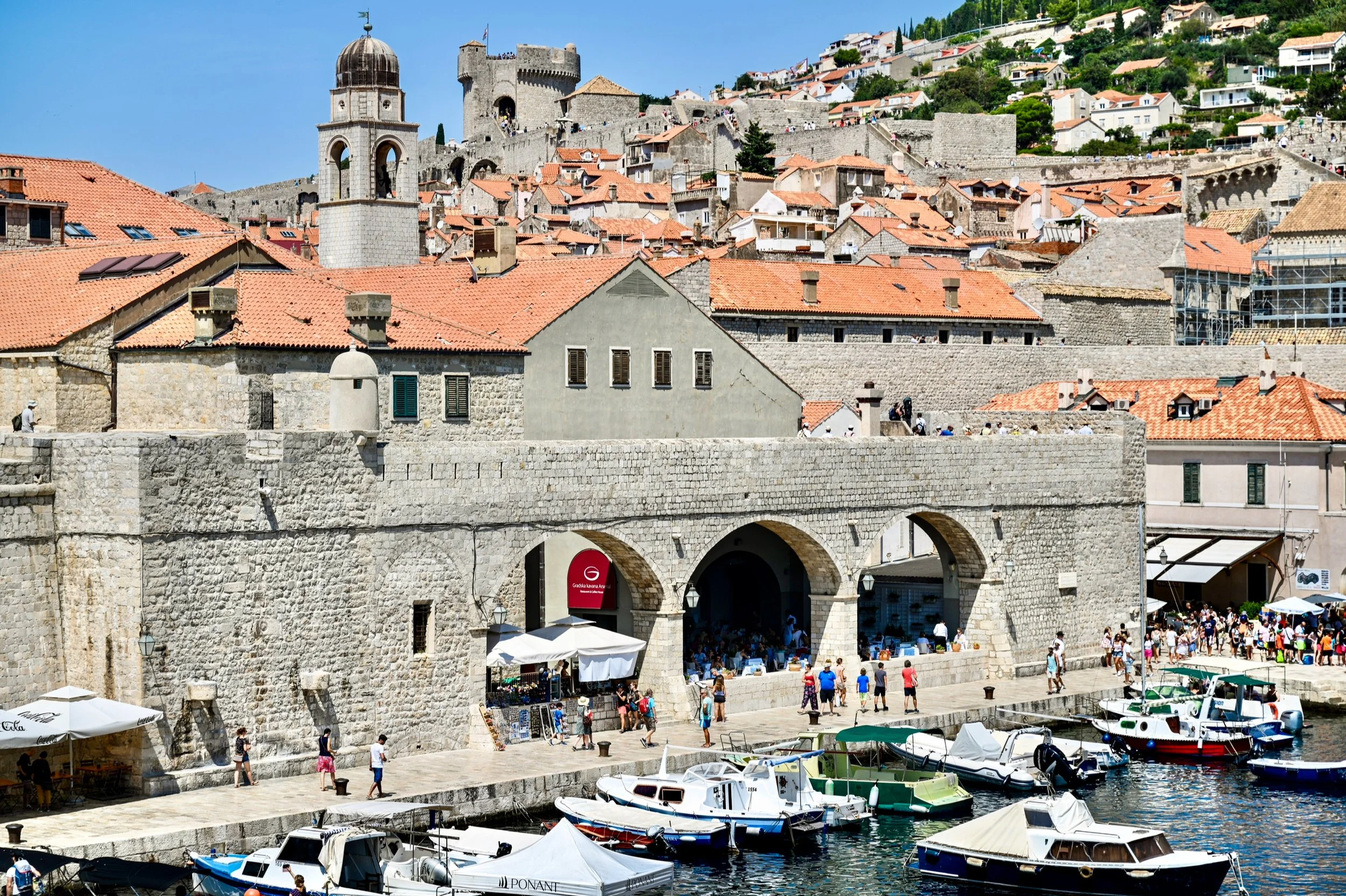Episode 129
Sretan rođendan, slušatelji podcasta!
Happy Birthday, podcast listeners!
It’s the summer of birthdays, so we’ve decided to learn some more birthday vocabulary!
We have cake and candles, so get ready to make a wish.
Lesson
Happy Birthday - Sretan rođendan
I wish you a Happy Birthday - Želim ti sretan rođendan
Balloons - balon/baloni
Cake - torta
Candles - svijećice
Make a wish - Zaželi želju.
Card and gift. Čestitka i poklon
party - zabava
Super Slatko Report
For this edition of the Super Slatko Report, DJ Moe digs into some Croatian monetary history. Did you know about a currency that was used through out certain areas of Hrvatska? If you’re intrigued like we are, tune in and learn about it with us!
Let’s start with Dubrovnik, as you may or may not know is a historic Croatian city located on the Dalmatian coast on the Adriatic Sea, Dubrovnik is renowned for its stunning architecture and rich cultural heritage. However, a lesser-known aspect of its history is its tradition of coin minting, which played a huge role in its economic and political development. The coinage of Dubrovnik reflects the city's position as a powerful maritime republic and its strategic role in trade between the East and West.
The tradition of coin minting in Dubrovnik dates back to the 14th century, during the time of the Republic of Ragusa. A aristocratic maritime republic centered on the city of Dubrovnik that carried the Republic of Ragusa name from 1358 until 1808. Its motto was "Non bene pro toto libertas venditur auro", a Latin phrase which can be translated as "Liberty is not well sold for all the gold". The statement is borrowed from Aesop's fable about a wolf that rather be free and starve than to be fat and a slave. - The Dog and the Wolf fable.
Initially, Dubrovnik did not produce its own coins but relied on foreign currencies for trade. However, as the city grew in economic stature and wanting greater autonomy from the neighboring powers like Venice, it began minting its own currency to assert its independence and facilitate trade. The first known Dubrovnik coins were minted in the early 14th century and were made of silver, following the standards of contemporary European coinage.
Dubrovnik's coinage was closely linked to its economic prosperity and maritime trade. The city's strategic location on the Adriatic Sea made it a crucial hub for merchants and traders traveling between Europe, the Ottoman Empire, and the Mediterranean. The minting of its own currency allowed Dubrovnik to standardize its monetary system and enhancing it’s own efficiency of trade transactions. The coins, often stamped with the image of St. Blaise, the city's patron saint, became widely recognized and trusted in regional markets, further boosting Dubrovnik's economic influence.
Why was St. Blaise Dubrovniks patron saint and minted on their coins?
St Blaise was honored as the patron saint of Dubrovnik from the 10th century. According to the legend, St Blaise saved the people of Dubrovnik in the 10th century when the Venetians anchored their ships in Gruž (a busy sea port north of Dubrovnik located in front of the Island of Lokrum). The people of Dubrovnik believed the Venetians that they would leave for Levant, (The Levant (/ləˈvænt/ lə-VANT) is an approximate historical geographical term referring to a large area in the Eastern Mediterranean region of West Asia, which includes present-day Israel, Jordan, Lebanon, Syria, the Palestinian territories and most of Turkey southwest of the middle Euphrates. Its overwhelming characteristic is that it represents the land bridge between Africa and Eurasia. THANK YOU WIKIPEDIA!) As I mentioned, after the Venetians supplied themselves with food and drink they would leave for Levant. But these visitors instead used the opportunity to see the sights and observed the weaknesses in the Dubrovnik and surrounding area defenses. Luckily St Blaise revealed their intentions to the parish priest Stojko and thus saved the City from the night attack. The priest described him as an old grey-haired man with a long beard, a bishops cap and a stick in his hand. Precisely the way his statues on the city walls and towers look like. Thats how you make it onto a coin.
Over the centuries, Dubrovnik produced various types of coins, each reflecting different historical and political contexts. Some of the most notable coins include the…
dinar
groschen
ducat
perper
I also heard that the Dubrovnik coins were preferred in trading over other coins of their time according to a local Dubrovnik tour guide. It sounded a little speculative , but it could also be true, a lot of what I read about the Dubrovnik minted coins regarded them highly for their quality.
All in all, The Republic of Ragusa set itself apart for the time, managing themselves economically by necessity to control its own progress. What a great way to build economic prowess and make the most of their situation.
And that’s it for the Super Slatko Report!






